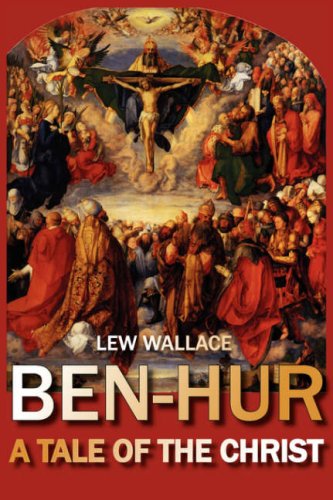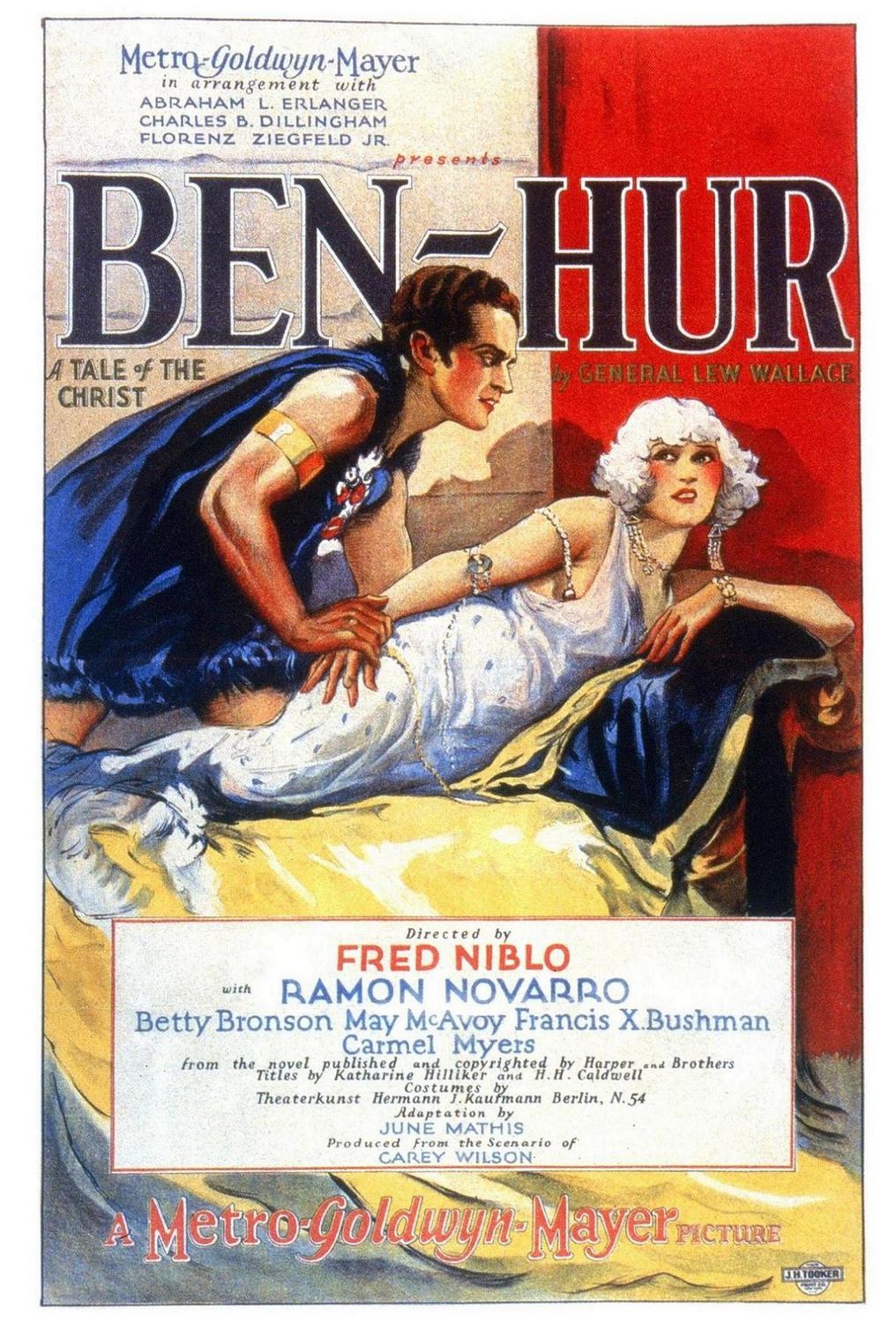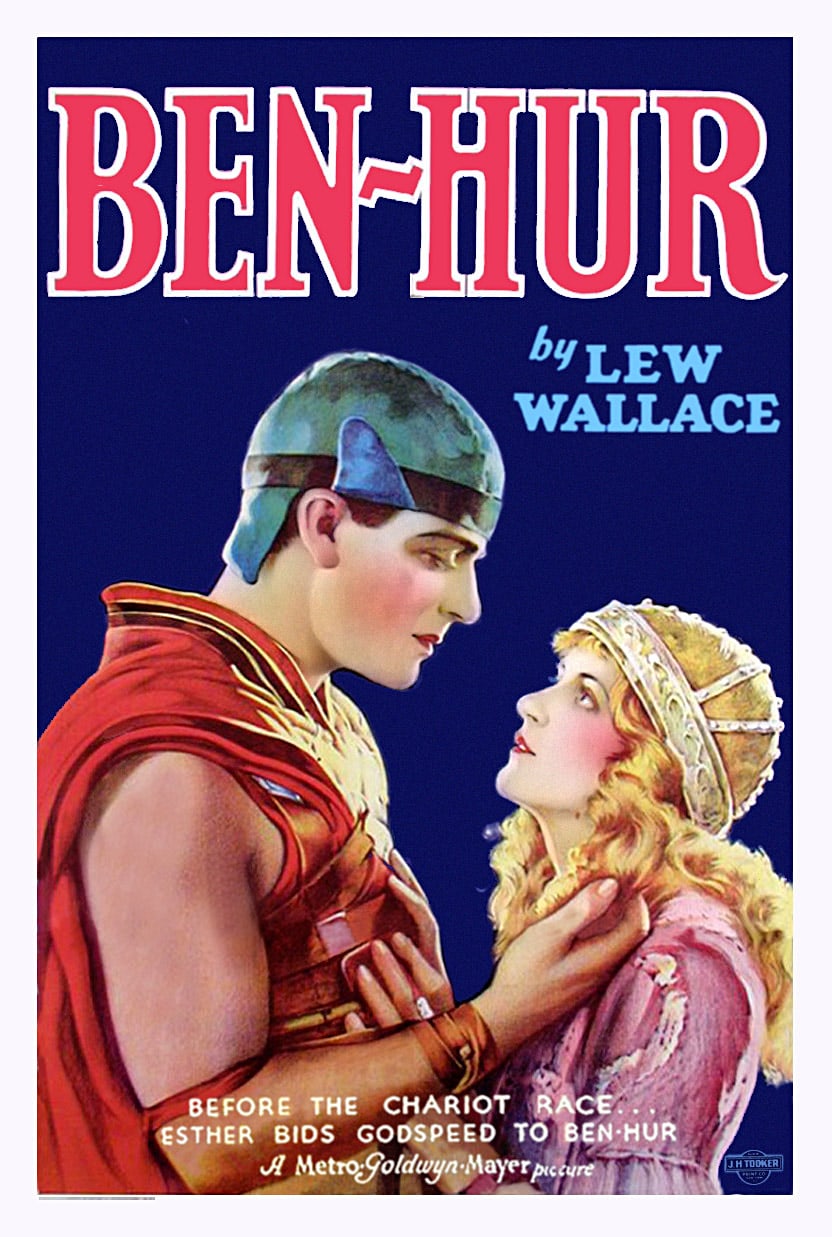Ben-Hur: A Tale of the Christ
Ben Hur ( in the original English Ben- Hur: A tale of the Christ ) is a 1880 novel published by the American General and politician Lew Wallace.
Action
The novel depicts the life of the fictional Jewish prince Judah Ben -Hur, who is sentenced at the beginning of the 1st century AD, due to an alleged attack on the Roman governor of Judea in the galleys, but later returned to his homeland and a rebel movement against the Roman plans. In a car race, he defeated his former friend and future foe, the Roman Messala. Ben Hur cancels his plans uprising, when he is convinced of the religious message of the crucified Jesus.
Effect story
The novel was a great and translated into many languages success. He was the most printed book after the Bible in the 19th century. At the beginning of the 20th century it was reworked into a play.
In 1907, a fifteen- minute silent film, which became a first sensational case of copyright infringement (see Ben -Hur (1907 ) ). 1925 fabric with Ramon Novarro was filmed consuming in the title role (see Ben -Hur (1925 ) ). Remarkably, the color sequences are in two-color Technicolor, in which Ben Hur is celebrated as the most important racers Rome. Even better known the film version from 1959, which is considered a classic and quintessential film was monumental (see Ben -Hur (1959 ) ). It was the first film that has worked extensively with the blue-screen technology at the.
2003, a version was produced as an animated film for the U.S. television; starring Charlton Heston said, the Ben- Hur actor from the film 1959. 2010 was a film adaptation for television completed ( Ben Hur (2010) ), in which Joseph Morgan plays the role of Ben Hur.
Historical inaccuracies
The galleys depicted in the novel and the film adaptations did not exist in ancient times. Roman warships were rowed by well-trained and paid marines. It requires a lot of skill and hard training to row a large galley evenly, and the professionalism of the Roman army wanted to leave nothing to chance. Inexperienced rowing crews of slaves, whose strength and endurance would have been restricted by physical punishment and inadequate rations and whether the hopelessness of their situation would possibly have mutinied, would not have made sense.
Another historical impossibility is the involvement of two members of the Roman ruling class in a public race. As a member of the Hellenistic Jewish upper class, it would be Ben Hur have been possible to go racing, but not as an adopted son of a Roman senator, especially as he drove under whose eyes already in the Circus Maximus.
Expenditure
- Ben- Hur. A tale of the Christ. Harper, New York 1880 ( first edition ).
- Ben- Hur. A story from the time of Christ. Complete edition. Edited, with an afterword and notes by Günter Jürgen Meier, the newly created and the translation of this issue based on several contemporary transmissions. German Taschenbuch Verlag ( dtv ), Munich 2002, ISBN 3-423-20503-2.
- Original text of the novel (English)
- German text translated in the Project Gutenberg- DE of Wilhelm Cremer, Publishing House of Schiller Bookstore, Berlin, 1906.





_01.jpg)




